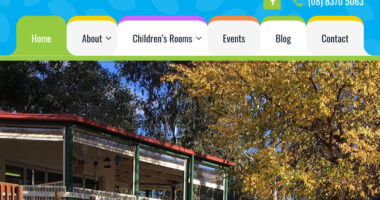


above an article about slideshows.

Slideshows are websites elements which transition between discrete sections of visual information, in the same area, in an organised and compact manner. Transitions take place on a timer ow with user interaction, transitioning through slides until returning to the first slide and starting again. If you’ve use the web in the last decade, you’ve probably seen a website slideshow.
Controversy
Sliders are a controversial design element. Many web designers think sliders suck and to some extent we agree. The biggest problem with sliders is when they are used on the homepage as an above the fold, screen encompassing, design centrepiece. Studies have shown that site visitors ignore the slider entirely or find it annoying.
Sliders take control away from the site visitor – a method to mitigate this problem is to prevent the slider from auto transitioning and allowing the site visitor to change slides themselves with arrow buttons. Another method is to make the slides actually do something, like embed a form or buttons into the slider.
Sliders can still be useful outside the homepage. They are best used when showcasing images to the site visitor such as photography, design work or real estate; essentially as dynamic image galleries. We use slideshows in our portfolio items to showcase different sections of websites we have built.
Website Slideshow Tools
All that said, if you really want a slider on the homepage, then we can build it for you. They are extremely popular; but be ye fairly warned. Sliders should meet the following critaria:
- Mobile responsive.
- Compatible with all the major web browsers.
- Light on memory usage.
In WordPress, we usually use Revolution Slider to build slideshows. Revolution slider allows us to add a variety of animations and elements within the slide in a relatively straightforward interface. There are a tonne of other slider plugins on the market including Meta Slider and Soliloquy which both have free versions.


